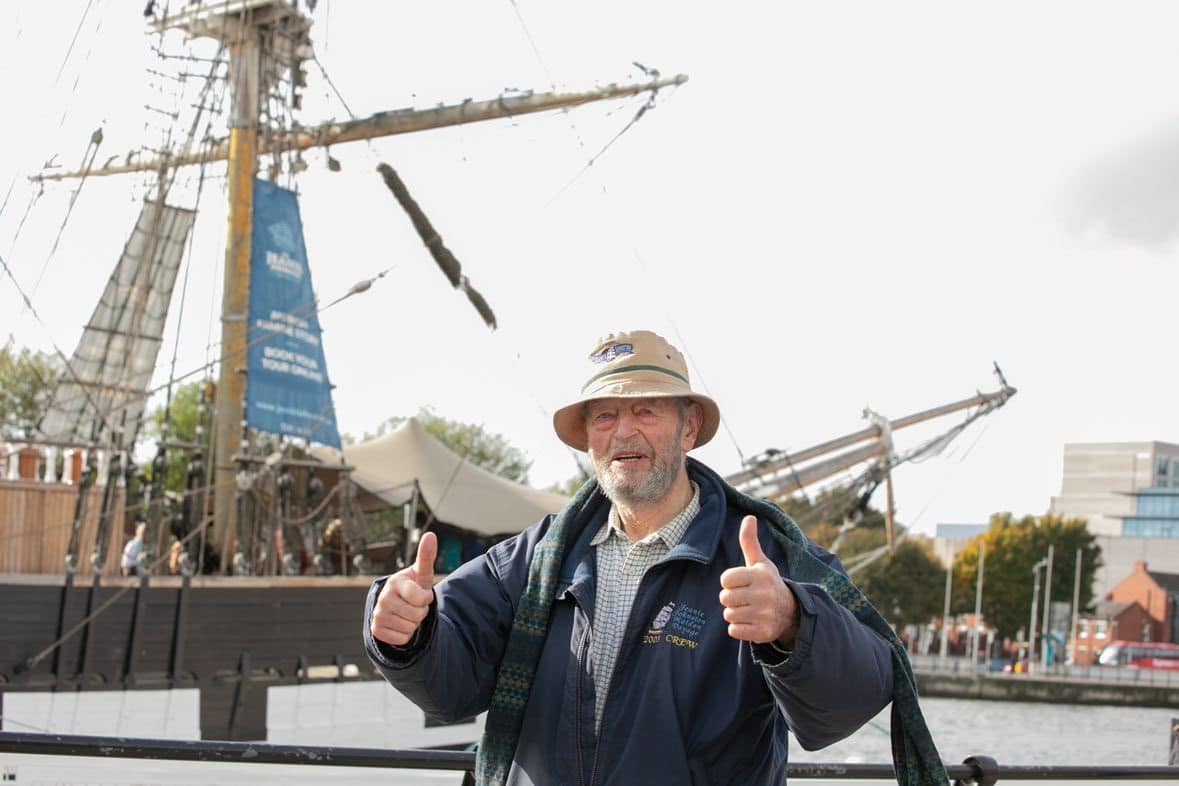Last month, Jim Callery, founder of the National Famine Museum in Strokestown, completed the National Famine Way trail, which tracks the 165km distance that 1,490 Irish people undertook in 1847 to escape the famine.
Callery completed the six-county trail in 20 days, embarking on the journey on September 25th, and arriving at EPIC on October 15th, which also happened to be the philanthropist’s 90th birthday.
Through this worthy cause, Callery managed to raise over €50,000 for immigrant charities, incensed by the current crisis, and imagining how the Irish who fled the famine must have felt upon entering a new country for a better life.
The Missing 1,490
1847 was the worst year of the famine, so much so that it became known as ‘Black 47’; it saw hundreds of thousands of people flee Ireland via vessels that would eventually be nicknamed ‘coffin ships’ due to their high mortality rate. The Missing 1,490 refers to the people who had to leave Strokestown Park in County Roscommon in 1847, their sights set on Dublin, where they would board a series of famine ships bound for Liverpool, with Canada as their ultimate destination.
The 1,490 consisted of men, women, and children, escorted by Bailiff Robison, and they trekked the 165km journey through six-counties from Roscommon, through Longford, Westmeath, Meath, Kildare, and finally Dublin. Those walking were tenants of local landlord Denis Mahon, who gave them three bleak options: starvation, a place in the workhouse, or emigration.
The unfortunate fate for many of the 1,490 was that the vessels they boarded had some of the worst standards of care, living well up to the nickname of coffin ships. They were a far-cry from the Jeanie Johnston, a much cleaner vessel with hygiene protocols in place and a doctor onboard, who managed to maintain a zero-death toll despite the period. Even when she eventually sank, not one crew member was lost because of it.
The vessel Naomi lost 196 of 471 passengers, while The Virginius saw the death of over half its passengers, 267 of 467. The high mortality rate on these ships only speaks to the desperation of the people to escape The Great Hunger of their homeland, willing to risk the high likelihood of death they could expect in boarding one of these ships. The group has the name the ‘Missing 1,490’ as it’s hard to track what happened to many of them, and whether they ever made it to their destination.
It’s clear that what we now know as the National Famine Way was a journey of true desperation, one embarked on by people who were hopeless in their circumstances, and it is in these people’s memory that Jim Callery decided to undertake the journey for himself.
An homage to the Missing 1,490
Callery started off on his journey on September 25th, at the age of 89. Proven by his opening the National Famine Museum in Strokestown, it’s clear that he is someone who sees the importance in remembrance and commemoration, to avoid making past mistakes. Callery was inspired to walk the trail after listening to current news headlines about immigration on the radio, and being struck by how little has changed in almost 200 years.
As the 1,490 people did in 1847, Callery set off on his journey from Strokestown Park, completing the trail on Tuesday October 15th, which also happened to be his 90th birthday. The end point of the trail can be found just outside of EPIC at Custom House Quay, with the Jeanie Johnston replica ship within sight, as many tall ships would’ve been moored ahead of their weeks-long travels to a new country. Callery was met by his wife Adeline, his two sisters, as well as the rest of his family, which included his four great-grandchildren.
In conversation with RTÉ News, Callery noted how “depressing” it is to listen to the headlines currently, “from houses being burned here, to the war in Ukraine. The whole Israel and what’s going on in it.”
He went on to clarify this is a worldwide issue, asking the questions, “Why are all those people running everywhere? What are they running from? And a lot of them losing their lives. That has to be dealt with.”
Callery managed to raise over €50,000 for immigrant charities by undertaking the trail and retracing the footsteps of those that were forced to emigrate 177 years ago. An incredible achievement and a point of inspiration for anyone thinking of completing the trail themselves.


